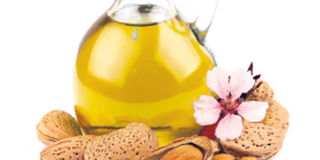Cradle cap in children: Use almond oil, not aqueous cream

Cradle cap is common in infants up to one year, but it makes babies look a little scaly. A little almond oil would work just as well, but without the negative effects. After a few days, my daughter’s scales came right off. PHOTO/FILE
What you need to know:
- One of the ingredients in the aqueous cream was the detergent sodium lauryl sulphate (SLS). Why would anyone want to put a detergent on their skin?
- You see, there is a thin layer of fats that lie on top of the skin, and rubbing aqueous cream (and thus the sodium lauryl sulphate) into the skin thins this protective barrier, making the skin more susceptible to irritation by chemicals.
When Baby Mukherjee was about a month old, she had cradle cap on her eyebrows and behind her ears.
Cradle cap is a skin condition that can cause thick crusting and white or yellow scales, and while I knew it could appear on a child’s scalp, at the time I was not aware that it can affect other parts of the body.
Further research revealed that cradle cap is common in infants up to one year, but since it made the little one look a little scary, I talked to my daughter’s paediatrician about it. His suggestion was to smother the area with aqueous cream.
As always, I wanted to know the science behind the recommended medication.
What exactly was aqueous cream and, more importantly, did it work?
Well, aqueous cream is paraffin-based emulsion and, as far as cradle cap is concerned, it works by softening the crusts, which can then be either washed off or combed out.
It sounded good in theory, but something was bugging me.
One of the ingredients in the cream was the detergent sodium lauryl sulphate (SLS). Why would anyone want to put a detergent on their skin?
It did not quite add up.
HOW AQUEOUS CREAM WORKS
This motivated me to look at other skin conditions that this cream is used for — the most common is eczema.
The idea is that aqueous cream provides a layer of oil on the surface of the skin to prevent water from evaporating.
However, scientists at the University of Bath in England found that aqueous cream actually thins the skin after a few weeks of use.
It appears that sodium lauryl sulphate actually increases water loss from the skin.
You see, there is a thin layer of fats that lie on top of the skin, and rubbing aqueous cream (and thus the sodium lauryl sulphate) into the skin thins this protective barrier, making the skin more susceptible to irritation by chemicals.
That is why many eczema sufferers stop using aqueous cream — they find that it irritates the skin.
The study, which was published in the British Journal of Dermatology, found that in children, 56 per cent experienced a “stinging” sensation when they used it. In fact, children said it caused more discomfort than any other product.
This was certainly not a product that I was going to use on my daughter, so I had to find an alternative.
Turns out that a little almond oil would work just as well, but without the negative effects. After a few days, my daughter’s scales came right off.
And as for the cradle cap, I should add that it is not contagious, neither is it an indication of poor hygiene.
That is why, most of the time, it just goes away on its own. So, although it might look uncomfortable or irritating to the skin, cradle cap generally does not bother children.
The writer is a clinical nutritionist and certified by the Nutritional Therapy Council in the UK. Please direct any questions about family nutrition to her on [email protected]




